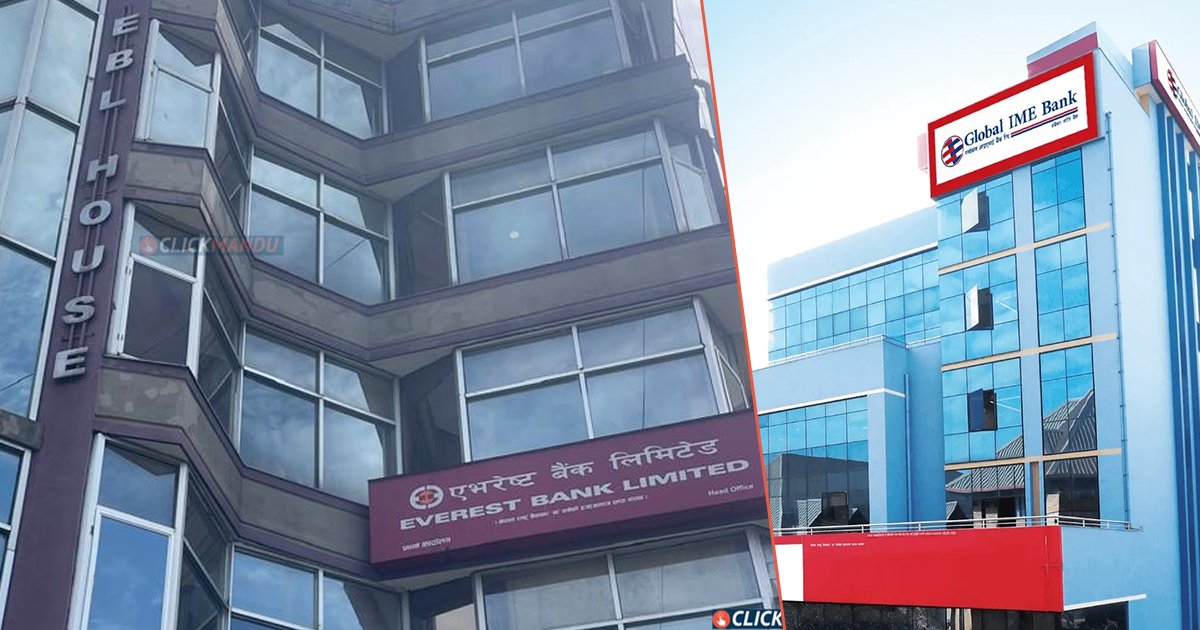Kathmandu: In the ongoing fiscal year 2025/26, Everest Bank and Global IME Bank have emerged as aggressive players in expanding credit (loans).
Compared to Asar (mid-July), commercial banks’ lending collectively declined by Rs 10.86 billion in Shrawan (mid-August). However, Everest and Global IME have significantly ramped up their loan portfolios in the very first month.
Out of the 20 operating commercial banks, lending decreased in 10 banks and increased in the other 10.
Everest Bank recorded the highest growth, increasing loans by Rs 5.64 billion in Shrawan, bringing its total lending to Rs 229.30 billion. The bank, which expanded credit by nearly 20 percent last fiscal year, has already raised lending by over 2 percent in the first month of the current year. Similarly, Global IME Bank raised loans by Rs 4 billion in Shrawan.
In contrast, NIC Asia Bank, which had reduced lending by Rs 48 billion last fiscal year, cut loans further by Rs 8.68 billion in the first month of the current fiscal year, according to Nepal Bankers’ Association data. Himalayan Bank reduced its loans by Rs 350 million, while Rastriya Banijya Bank’s lending dropped by Rs 3.17 billion in Shrawan.
Agricultural Development Bank’s credit shrank by Rs 2.67 billion, Nabil Bank’s by Rs 2.08 billion, and Kumari Bank’s by Rs 2.05 billion.
Compared to Asar, deposits at commercial banks fell by Rs 52.22 billion in Shrawan. With excess liquidity and limited investment opportunities, some banks have reduced deposits to manage their credit-to-deposit (CD) ratio, which currently ranges between 70 and 80 percent. Meanwhile, others are strategically increasing deposits to support business growth.
Global IME Bank again led the way, raising deposits by Rs 7.96 billion to Rs 583.01 billion. Nabil Bank followed, adding Rs 4.76 billion to reach Rs 537 billion. Himalayan Bank also grew deposits by Rs 4.67 billion, totaling Rs 317.73 billion. Nepal SBI Bank’s deposits increased by Rs 1.07 billion, while Standard Chartered Bank’s grew by Rs 1.98 billion.
On the other hand, Siddhartha Bank reported the sharpest decline, with deposits dropping by Rs 17.44 billion, followed by Kumari Bank with a decline of Rs 16.31 billion. Nepal Bank’s deposits fell by Rs 6.98 billion, and Prabhu Bank’s by Rs 6.81 billion.



Comment Here